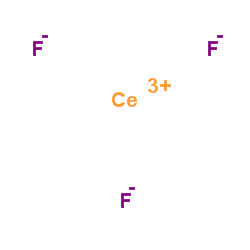Transparent infrared-emitting CeF3:Yb-Er polymer nanocomposites for optical applications.
Mei Chee Tan, Swanand D Patil, Richard E Riman
文献索引:ACS Appl. Mater. Interfaces 2(7) , 1884-91, (2010)
全文:HTML全文
摘要
Bright infrared-emitting nanocomposites of unmodified CeF(3):Yb-Er with polymethyl-methacrylate (PMMA) and polystyrene (PS), which offer a vast range of potential applications, which include optical amplifiers, waveguides, laser materials, and implantable medical devices, were developed. For the optical application of these nanocomposites, it is critical to obtain highly transparent composites to minimize absorption and scattering losses. Preparation of transparent composites typically requires powder processing approaches that include sophisticated particle size control, deagglomeration, and dispersion stabilization methods leading to an increase in process complexity and processing steps. This work seeks to prepare transparent composites with high solids loading (>5 vol%) by matching the refractive index of the inorganic particle with low cost polymers like PMMA and PS, so as to circumvent the use of any complex processing techniques or particle surface modification. PS nanocomposites were found to exhibit better transparency than the PMMA nanocomposites, especially at high solids loading (>/=10 vol%). It was found that the optical transparency of PMMA nanocomposites was more significantly affected by the increase in solids loading and inorganic particle size because of the larger refractive index mismatch of the PMMA nanocomposites compared to that of PS nanocomposites. Rayleigh scattering theory was used to provide a theoretical estimate of the scattering losses in these ceramic-polymer nanocomposites.
相关化合物
| 结构式 | 名称/CAS号 | 分子式 | 全部文献 |
|---|---|---|---|
 |
氟化铈
CAS:7758-88-5 |
CeF3 |
|
Comparison of the Biological Impacts of the Fluoride Compoun...
2015-09-01 [Biol. Trace Elem. Res. 167 , 84-90, (2015)] |
|
[Morphometric research in determining the absorbed dose in t...
1989-01-01 [Med. Radiol. (Mosk.) 34(1) , 60-5, (1989)] |
|
Anti-erosive potential of amine fluoride, cerium chloride an...
2011-12-01 [Arch. Oral Biol. 56(12) , 1541-7, (2011)] |
|
Synthesis and characterization of ultrafine CeF3 nanoparticl...
2006-10-15 [J. Colloid. Interface Sci. 302(2) , 509-15, (2006)] |
|
[The comparison of luminescence properties for Ce3+, Tb3+ io...
2000-08-01 [Guang Pu Xue Yu Guang Pu Fen Xi 20(4) , 560-2, (2000)] |